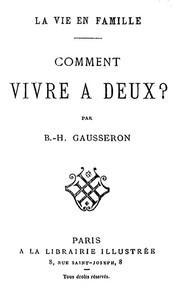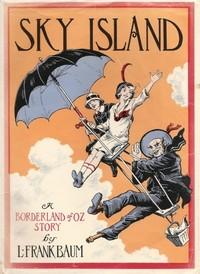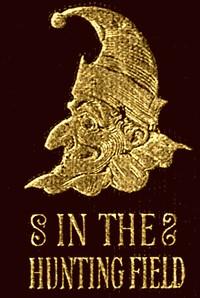|
|
Read this ebook for free! No credit card needed, absolutely nothing to pay.Words: 35474 in 7 pages
This is an ebook sharing website. You can read the uploaded ebooks for free here. No credit cards needed, nothing to pay. If you want to own a digital copy of the ebook, or want to read offline with your favorite ebook-reader, then you can choose to buy and download the ebook.

: The First Seven Divisions Being a Detailed Account of the Fighting from Mons to Ypres by Hamilton Ernest Lord - World War 1914-1918 Campaigns Western Front@FreeBooksWed 07 Jun, 2023 n they were further north, the original idea of the wheeling movement having been, in fact, entirely based on the knowledge of the gradually diminishing strength of the German forces as they stretched northwards. It was a miserable day, foggy and wet. The Dorsets were on the extreme right of our army, in a line of trenches on the low ground between Givenchy and the canal. The attack was pressed with great vigour by the enemy, and the 1st Bedfords, on the left of the Dorsets, were driven out of the village of Givenchy. The left flank of the Dorsets was now exposed to enfilading fire from the ridge on which Givenchy stands, and their position was distinctly precarious. Some of the left-hand trenches were all but surrounded, the enemy having pressed forward into the gap at Givenchy, and from thence bearing down on the flank of the Dorsets. That regiment, however, held on with the utmost tenacity and successfully defended its position against repeated and most determined attacks; but the position was distinctly critical, and it was felt to be essential that orders of some sort should be received from Brigade Head Quarters. The telephonic communication had unfortunately been cut and there was no means of getting a message through except by hand, which, in the circumstances, seemed an all but impossible undertaking. A private of the name of Coombs, however, volunteered to try, and on the outward voyage actually got through untouched, but on returning with the necessary orders he was shot clean through the chest, but continued running for another 200 yards till he had delivered his message. The loss, however, was limited--as a loss--to the treacherous massacre of several hundred gallant men, and the capture of two of the supporting guns. The Gunners, as usual, behaved with the utmost gallantry, but they too came under the same enfilading fire as the Dorsets and every man of the detachment except Captain Boscawen fell either killed or wounded. Two of the guns were captured, but, with this, the material advantage gained by the enemy began and ended, for the 1st Cheshires were brought up from reserve and, with their co-operation, the morning's line was re-occupied. The Cheshires, however, themselves suffered considerably, among their casualties being their C.O., Col. Vandeleur, who was killed while leading the attack. On the 15th, as though in fury at the loss of their gallant General, the 3rd Division, now under the command of General Mackenzie, fought with a dash and determination which were irresistible. Their advance was continually checked by the country dykes, but, in spite of these hampering obstacles, the Germans were everywhere driven back with heavy loss. The 4th Middlesex and the 2nd R. Scots again did particularly good work, and, further north, in the 9th Brigade, the R. Fusiliers and the Northumberland Fusiliers gained high praise from the A.C. Commander for the vigour and activity with which they pushed forward in the face of strong opposition. Conneau's cavalry, filling the eight-mile gap between the two Army Corps, also made good progress, as did the 3rd A.C., on the left. In the case of the latter Army Corps the 6th Division succeeded in reaching Sailly without encountering serious opposition, while the 4th Division got as far as Nieppe. The 2nd A.C., in its attempt to wheel, had so far advanced its left flank three miles in the last four days at a cost of 90 officers and 2,000 men. It had, however, inflicted very heavy losses on the enemy. On the 16th the 3rd Division continued the wheeling movement with little opposition till it reached the village of Aubers, which was found to be strongly held, and where it was brought up short. So much for the present as regards the general movement forward of the four divisions of infantry working south of Le Gheir. The attempt to drive the enemy back was destined to prove abortive, but this was not generally recognized by October 17th, and the idea was still to push our troops forward. This general desire to advance soon communicated itself to the 15th Brigade, on the extreme right of the British line at Givenchy, which had so far been looked upon as the pivot on which the left was to sweep round, and on the morning of the 17th the brigade was ordered to push ahead. During the night of the 16th the 1st Devons had taken over the trenches just north of the canal in which the Dorsets had suffered such terrible casualties three days earlier. The 1st Bedfords were on their left, and on their right, of course, were the French Territorials south of the canal. At 5 a.m. on the morning of the 17th a great bombardment was concentrated upon Givenchy, and the Germans were soon shelled out of that place, which had been in their possession since the 13th. A general advance was thereupon ordered. As a precaution against the calamity which had overtaken the Dorsets, the Devons put one company on the south side of the canal. This company was in touch with the French Territorials--so long as these latter kept up in line, which, as it proved, was not for long. The advance was made under considerable difficulties, as the country afforded no natural cover, and the enemy was found to be in far greater force than had been anticipated. However, in spite of a most continued and stubborn resistance, the Devons, in obedience to orders, succeeded in advancing their position 1,000 yards, and held on there till dusk, waiting for the French Territorials on their right and the regiment on their left to come up into line. These, however, failed to arrive, and it soon became clear that for the Devons to remain isolated at the point to which they penetrated could only result in the capture of the entire battalion. Their retirement, however, in the circumstances, was a matter of extreme difficulty, the country being quite flat and entirely destitute of cover. The enemy were favoured by an exceptionally clear field for their fire, and all their attention was naturally focussed on the one battalion which had dared to push so far ahead. The men were sheltering as best they could in ditches and behind haystacks, of which there was fortunately a fair sprinkling. When the order came to retire some crept away under shelter of the hedges; others had not even this cover, and had to take their chance in the open. One detachment of some forty men were sheltering behind a large haystack in the open. They were quickly located, and shrapnel and machine-gun fire was concentrated on the haystack, which soon began to dwindle under the hail of missiles. Lieut. Worrall, who was one of the party, thereupon set fire to the haystack, and told the men to make a bolt for it singly, under cover of the smoke. This they successfully did, and with few further casualties--all but Sergt. Harris and another man, who were wounded and could not move. The haystack was now beginning to blaze fiercely and it was clear the men could not be left. Lieut. Worrall picked up Sergt. Harris and carried him 400 yards across the open to the shelter of the canal bank, where he left him. Then he went back for the other man. In the meanwhile the line further north was still making a certain progress. At Lorgies a party of the K.O.S.B. Cyclists, under Corpl. Wheeler, rode right into the enemy outposts. They promptly dismounted, and, opening fire, held the enemy for half an hour till the brigade arrived on the scene and captured the place. Still further north again Gen. Shaw and his 9th Brigade was as usual fairly active. About 4 p.m. the R. Scots Fusiliers and the Northumberland Fusiliers attacked and carried the village of Aubers with the bayonet, completely routing the occupying troops; and a little later the R. Fusiliers and Lincolns performed the same office by the village of Herlies. Aubers stands on the crest of the ridge which faces Neuve Chapelle. Herlies, on the other hand, lies at the foot of a long, gradual slope of open, cultivated land. The village was defended on the west side by a semi-circular line of trenches, protected by barbed wire entanglements. The defenders had also a Horse Artillery Battery and--as usual--a great number of machine-guns posted here and there in any suitable buildings. The two attacking battalions, on the other hand, were supported by a R.F.A. battery and a section of howitzers. These did admirable preliminary work, and at dusk the two regiments--Lincolns on right, R. Fusiliers on left--charged the trenches, carried them hot-handed and pursued the Germans into the village. Here further pursuit was unfortunately checked by the too great activity of our own artillery, but the position won was occupied and held for six days. The Lincolns, who were the chief sufferers, lost seventy-five men and two officers during this attack. Free books android app tbrJar TBR JAR Read Free books online gutenberg More posts by @FreeBooks
: La Vie en Famille: Comment Vivre à Deux? by Gausseron Bernard Henri - Family life; Marriage FR Education et Enseignement@FreeBooksWed 07 Jun, 2023

: A Review of the Systems of Ethics Founded on the Theory of Evolution by Williams Cora May - Ethics Evolutionary@FreeBooksWed 07 Jun, 2023
|
Terms of Use Stock Market News! © gutenberg.org.in2025 All Rights reserved.






